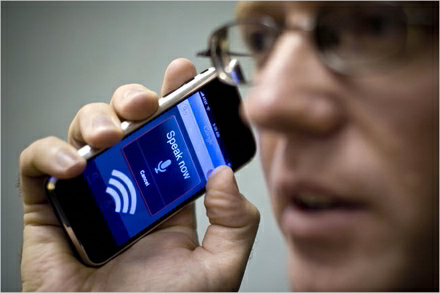The possibility of humans interacting with computers using voice input is a notion that we have seen a lot in movies. The 2004 ‘I Robot’ science fiction film is a case in point. The main characters appear in several scenes interacting with a supercomputer named V.I.K.I (Virtual Interactive Kinetic Intelligence), which later tries to take over humans by controlling the NS-5 robots. In the 2001 movie, ‘A Space Odyssey’, we see a supercomputer by the name HAL leading a space mission to Jupiter.
While the possibilities presented in these science fiction films seem a bit futuristic, the use of voice recognition technology seems to be getting better and better with each passing year. From GPS systems, to mobile apps and TV remotes, the number of voice-controlled applications keeps growing. However, processing voice commands is a computing technique still being perfected. In this post, we shall have a look at some of the ways in which speech recognition has become practically useful despite the technical weaknesses that plague this technology.
Transcription Software
The use of transcription software with voice recognition functionality is one perfect example of how speech input can help to simplify tasks. Many audio typing companies these days use software to transcribe digital dictations automatically. These applications have the ability to decode digital audio into text with an accuracy ranging between 60 to 90%. With the help of such programs, transcribers only have to edit transcripts for accuracy and readability instead of typing everything from scratch. This not only simplifies the task of transcribing, but also increases turnaround time for clients who need transcripts delivered in a short time. As these programs improve, perhaps there will come a time when the keyboard will no longer be the standard typing tool.

Voice Biometrics
Some systems use voiceprints based on specific text or numbers to control access to data and/or services. Voiceprints are then stored against client records, so when customers call, they can simply say their name or reference number. If the person talking matches the voiceprint for the corresponding record in the database, then the caller is put through to a customer care representative. The use of voice biometrics in this manner helps to prevent identity fraud and many companies are using it to secure their systems.
Speech Controlled Interfaces
Software developers are increasingly designing applications that run on speech controlled interfaces. Samsung for instance has rolled out several smart TVs with voice controlled remotes. There is also the Sync entertainment system in Ford vehicles that uses Naunce’s technology to pull up weather information, directions and song lists. Then there is Siri, the voice-activated PDA, which works with iPhones.
Apart from voice biometrics, transcription software, and voice controlled interfaces, the list of applications that use speech recognition is endless. What this technology does ultimately is that it helps users to accomplish tasks that would normally require a multitude of button presses or swipes. As computer scientists continue to perfect artificial intelligence, we are getting closer to machine interfaces that we can actually interact with at a more advanced level.
This article was written by David Wallace, a technology enthusiast and blogger based in Edinburgh. He is also a contributing writer for 1st Class Secretarial Services – check here, which is a leading provider in the UK that uses the latest transcription technology.




